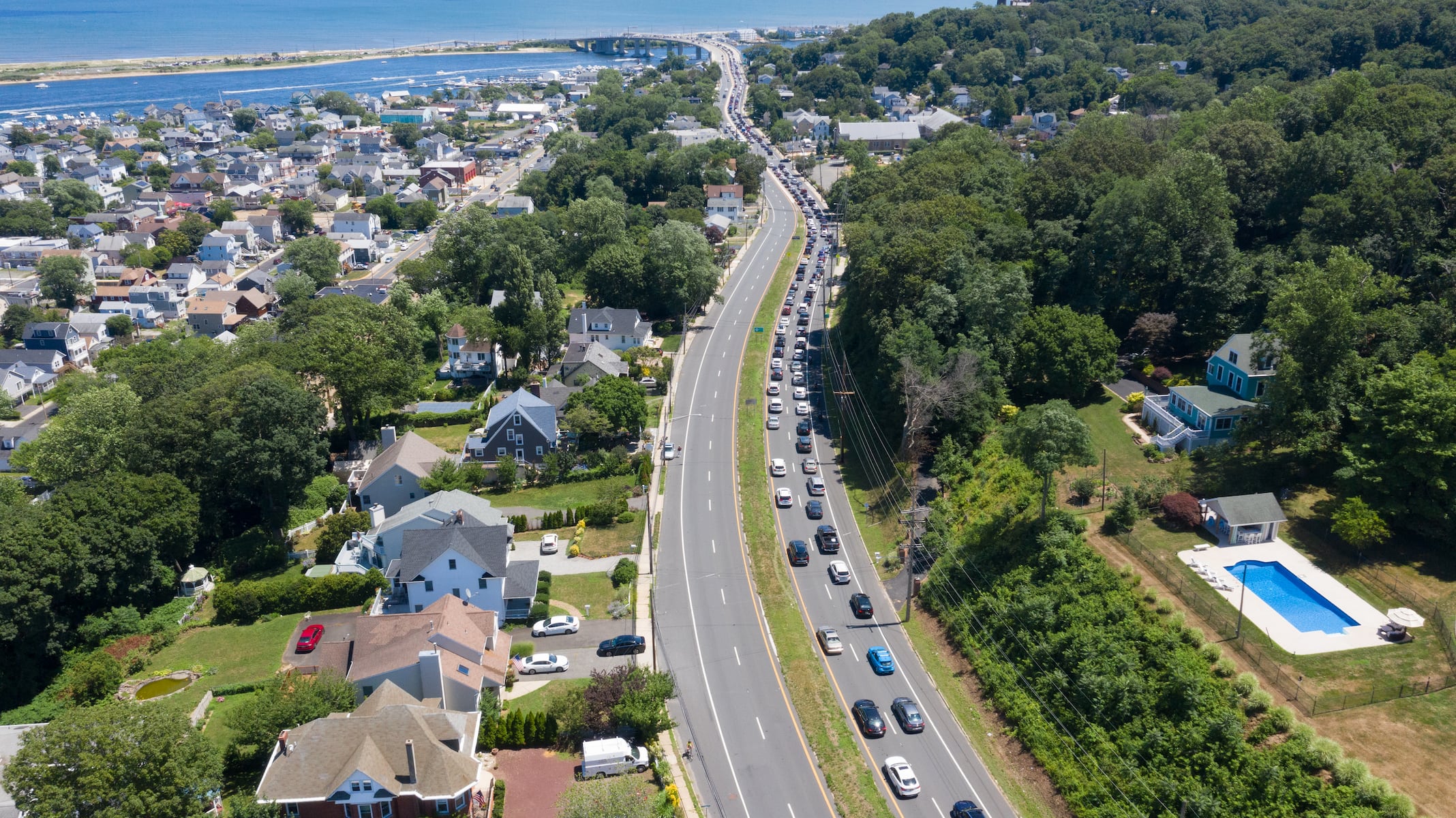Summer traffic congestion at Gateway National Recreation Area in Sandy Hook is creating significant financial burdens for nearby Monmouth County towns, according to local officials. Over the past five years, Highlands has reportedly spent hundreds of thousands of dollars on police overtime to manage traffic that spills into the town from the popular park.
Highlands Mayor Carolyn Broullon recently took to social media to rally public support, urging residents to voice their concerns to the National Park Service. “I’m asking all Highlanders to write to the Gateway National Recreation Area about how their mismanagement of the toll area is impacting our town and creating an Emergency Service nightmare,” Broullon wrote on Facebook.
Traffic Troubles Escalate
The traffic congestion has reached a critical point, affecting several towns in the area, including Sea Bright, Monmouth Beach, and the Atlantic Highlands. The bottleneck begins at the park’s toll booth entrance, extends down Ocean Avenue, and backs up across the Captain Joseph Azzolina Memorial Bridge into Highlands and along Route 36.
Highlands Chief of Police Robert Burton highlighted the ongoing challenges, noting, “There have been problems for years with traffic. We’ve tried to take some measures to close roads and push traffic in different directions, but that causes issues in other areas.”
Proposed Solutions and Challenges
Local officials have proposed several solutions to mitigate the traffic issues, including an E-ZPass system for season pass holders and a parking kiosk to streamline traffic flow. However, these suggestions have met with resistance from the National Park Service, which prefers a single-point service approach.
“There are seven miles of road inside the park, and if cars could flow in and out of the park, it would go a long way towards helping us deal with backed-up traffic,” Burton explained. Despite these efforts, the park’s current infrastructure remains a significant hurdle.
Financial and Operational Impact
The financial impact on local towns is considerable, with Highlands alone spending an estimated hundreds of thousands of dollars on police overtime in recent years. “It’s just unfair that this issue falls to the local towns to handle,” Burton remarked, emphasizing the strain on local resources.
Efforts to manage the traffic have included deploying traffic cones and manually controlling traffic lights, but these measures have provided only temporary relief. “We get so many calls from residents with complaints about cars turning around in residential neighborhoods,” Burton said.
Historical Context and Future Outlook
Traffic issues at Sandy Hook are not new, but they have intensified in recent years. In 2020, local officials began working with the National Park Service to address the problem. Initial attempts included allowing traffic to flow into the park once it backed up onto Navesink Avenue, but these measures were insufficient.
In 2021, a pilot program introduced a bypass lane for season-pass holders, but this too faced challenges. According to park officials, faster traffic flow into the park often leads to quicker closures, forcing traffic back into the Highlands.
“The faster traffic flows into the park, the quicker the park has to be closed, which forces traffic westbound into the Highlands,” park officials explained in an email to Broullon.
Seeking Solutions and Community Involvement
As the summer season continues, local officials are urging the community to engage with the National Park Service to find a sustainable solution. Broullon’s social media appeal aims to galvanize residents to share their experiences and concerns, hoping to prompt action from park authorities.
While the National Park Service has not yet provided a detailed response to the ongoing issues, the call for community involvement underscores the urgency of finding a resolution. As the situation develops, local leaders remain committed to working towards a solution that alleviates the burden on Monmouth County towns.
For now, the traffic woes at Sandy Hook serve as a reminder of the complex interplay between natural attractions and the communities that support them. As discussions continue, the hope is for a collaborative approach that balances the needs of both the park and its neighboring towns.
